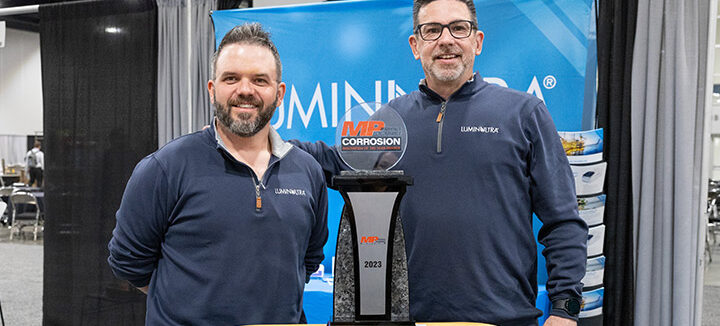Professionals in the upstream oil and gas production industry have been aware of sulfate-reducing prokaryotes (SRP) in oilfield fluids since the early 1900’s however, it wasn’t until the 1990’s that their significant impact on reservoir souring was fully recognized. SRP reduce inorganic sulfur-containing compounds like sulfate and produce hydrogen sulfide (H2S) which is a colorless gas that is highly toxic to humans at low concentrations and extremely corrosive to process equipment. The impacts on both capital and operational costs are significant with microbially-influenced corrosion (MIC) alone costing an estimated US$2.5 trillion annually. Because of the high costs, human health and safety risks, and impact on product quality, significant effort is placed on preventing H2S formation in upstream oil and gas reservoirs – a phenomenon known as reservoir souring.
While several factors influence reservoir souring including temperature, water quality, pressure and subsurface geochemical properties, microbial growth introduced through produced water flooding has been identified as a leading cause of souring. For this reason, operators must closely monitor injected water quality and H2S concentrations in the system.
When an increase in H2S is detected, microbially driven sulfate-reduction can be identified by monitoring the ratio of sulfur isotopes (34S/32S) compared to the baseline. Microbial mechanisms utilize primarily the 32S isotope; therefore, a decrease in the ratio from the standard can indicate that microbiological growth is at play. However, because other factors can also influence the ratio of sulfur isotopes, this method should be used cautiously (Johnson et al., 2017).
A more direct way to monitor microbial growth and proactively prevent reservoir souring is through rapid on-site adenosine triphosphate (ATP) testing. ATP is found in all living and active cells and can therefore provide an immediate measure of total microbial content in any produced water or oil and gas sample. This allows operators to confirm biocide and treatment efficacy and identify excess growth on-the-spot to help avoid microbially driven reservoir souring.
For those interested in further investigating issues, molecular methods such as next-generation sequencing (NGS) and quantitative polymerase chain reaction (qPCR) testing can identify the specific microbes present down to the genus, and in some cases the species level. This helps users understand the microbial ecosystem present naturally in the reservoir or produced water and track changes in the population during contamination or souring events.
Through routine monitoring of overall biological content and microbial community dynamics in produced water and reservoir fluids, growth can be identified immediately and treated before contamination issues arise to help prevent souring and the associated operational risks.
To read more about the destructive impacts of MIC, continue reading this blog from Neil Sharma at InstantLabs, which is now a LuminUltra company!
Further reading:
Cocktail Party Examples – Microbiologically Induced Corrosion










